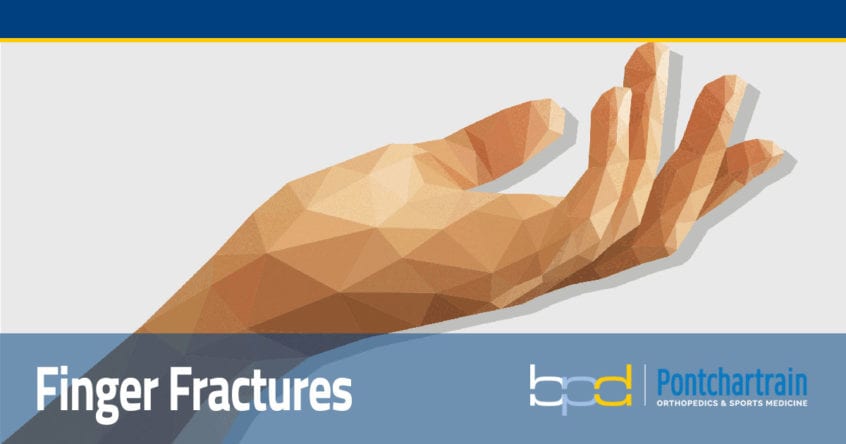What Are Finger Fractures?
Fourteen finger bones (phalanges) provide the framework for the muscles and tendons that make the hand and fingers move and allow us to grip, grab, and manipulate objects. Finger fractures can prevent use of the hand and fingers in a normal manner.
Many people think that a fracture is different from a break, but they are the same. Another misconception is the thought that “it can’t be broken because I can move it”.
Types of Finger Bones
Metacarpals
Metacarpals make up most of the bone structure of the hand. Metacarpals are similar in shape and have joints in the wrist on one end, and the finger at the other. The index and middle finger metacarpals move very little. The metacarpals of the ring and little finger haved a wider range of motion.
Proximal Phalanges
When counting from the hand to the tip of the finger, the proximal phalanx is the first bone. There are three phalanges in each finger. The proximal phalanx is the largest of the three finger bones. The proximal phalanx has joints with the metacarpal and the middle phalanx.
Middle Phalanges
When counting from the hand to the tip of the finger, the middle phalanx is the second bone. The middle phalanx has joints with the proximal phalanx and with the distal phalanx of the finger.
Distal Phalanges
The distal phalanx is the third of the three bones in each finger. The distal phalanx shares one joint with the middle phalanx and supports the fingernail. On the tip of the phalanx is a bulbous piece of bone that give the finger its rounded appearance.
Typical symptoms of finger fractures may include:
- Pain
- Swelling
- Bruising
- Stiffness
- Deformity
To alleviate symptoms, the fracture must be treated appropriately.
How is a Fractured Finger Diagnosed?
Early diagnosis is important in the successful treatment of finger fractures. Clinical evaluation and X-rays are used to diagnose fractures. In some cases, advanced imaging techniques, such as CT scans may be used.
How Are Finger Fractures Treated?
As each finger fracture can be different, treatment is catered to each injury. Fortunately, most fractures may be treated without surgery. Nonsurgical treatment of stable finger fractures involves the use of a brace or splint to immobilize the bone while it heals.
Surgical treatment may be needed for fractures that are displaced or unstable. The goal of surgery is to align and hold the bone in place while it heals. This is accomplished using a combination of small pins, screws, plates, or wires.

